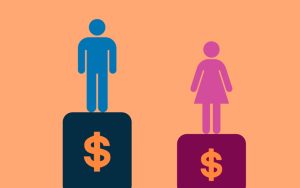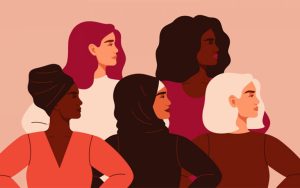Female Workplace Issues and Empowerment
Female Workplace Issues and Empowerment
Empowerment of women in the workplace is a delicate and crucial subject. The ongoing existence of variation in wages remains a concern, with women often getting less pay than their male colleagues for equal work. Women’s career development suffers by a lack of representation in leadership positions. Managing family and work duties can be difficult, resulting in concerns such as the mother’s penalty. Gender harassment and prejudice are not wanted, but they still take place in some settings. It is crucial to address these concerns and empower women in their careers by creating a friendly and inclusive work environment.

Malala Yousafzai
“Became known as the world’s youngest Nobel Peace Prize laureate, winning the award at the age of 17, all while suffering a Taliban attack on her school in Afghanistan.”
“I raise up my voice – not so that I can shout, but so that those without a voice can be heard. … We cannot all succeed when half of us are held back.”
Obstacles of Female Workplace Issues:
Over the last four years, Leanin.org and McKinsey have undertaken substantial research on the status and involvement of women in the workforce. While it seems that the world is changing and that women are growing more in the labor sector, the reality is quite different. ‘Progress isn’t slow; it’s stagnant,’ according to the research.
Addressing Gender Discrimination:
Women continue to confront difficulties at all stages of the professional ladder, from entry-level to C-suite. Based on a 2018 Women in the Field study, women of color experience the greatest underrepresentation, trailing white males, men of color, and white women. Women of color hold only 17% of entry-level positions and 4% of C-suite roles. This disparity is most obvious in top management positions, with women comprising only 22% of C-suite executives. In contrast, 62% of men hold management posts, while 38% of women receive promotions to such positions.

It’s worth noting that the rate of harassment among men and women their employers is almost alike. As a result, this gender disagreement and unfairness cannot be explained by wearing down.
Gender Wage Inequality:
Unexpectedly, women continue to earn only 77.9 cents for every hard-earned dollar that men earn, exhibit a large gender pay gap that remains bold.
Surprising findings from thorough research released in 2018 offer an even bleaker image, suggested that the median wage for women is around 22% lower than that of men. This major gap highlights a severe injustice while also raising basic questions about workplace equity.
Despite improvements and appeals for gender parity, major salary disparities continue to impair women’s financial well-being and job success, showing a long road to economic equality.

This issue significantly affects women’s financial independence, child-rearing capabilities, and overall financial stability close this gap and create a more equal future for everybody.
Unwanted Sexual Approaches:
Sexual harassment is on of the serious issue among female workplace issue. The ad emphasized verbal, visual, and physical workplace harassment, which affects 35% of full-time corporate women. Surprisingly, 75% of women who face hostile workplace environments do not disclose it, especially when the killer is in a prominent position.

Why didn’t the person who was hurt expose the wrongdoing?” many people wonder. The basic cause of this anxiety is the general dread of losing their work. Unexpectedly, according to the same EEOC study, “75% of harassment victims experienced harassment when they dared to report it.” This greatly bother figure highlights the terrible consequences that those who boldly speak out about bias at work face.
Discrimination During Pregnancy:
One of even more serious problem in female workplace issue is discrimination during pregnancy. According to The Guardian, over 50,000 women suffer job loss as a result of harm during pregnancy. Companies that dismiss, refuse to recruit, or mistreat women because of their pregnancy or motherhood belief are committing pregnancy discrimination.

Discrimination includes insulting comments about a woman’s health made by supervisors, and coworkers, which affects hours, and promotions.
Racial and Ethnicity Factors:
Racism is still a serious concern in society, based on 64 percent of Americans, and its impacts are visible in the workplace. White people, both men and women, usually have more work customers than their colleagues from other racial origins. According to the EEOC, political bias allegation for 33.9% of all prejudice at work claims in 2017.
According to a 2017 UK government estimate, fully use the skills of black and minority ethnic workers may enhance the economy by up to $29 billion.

When managers favor white candidates, stating they do not correspond with the company’s ideals, women confront racial workplace bias.
Summary:
Despite global progress exchanges, there is still a worrying gender bias in women’s employment challenges today. Women frequently balance jobs and household duties, although society often expects males to be the major providers. While some males support women, they frequently severely criticize and mock the term ‘feminism.

It is critical to eliminate toxic strength and promote the actual core of feminism. Feminism seeks to eliminate gender differences and achieve gender equality.









